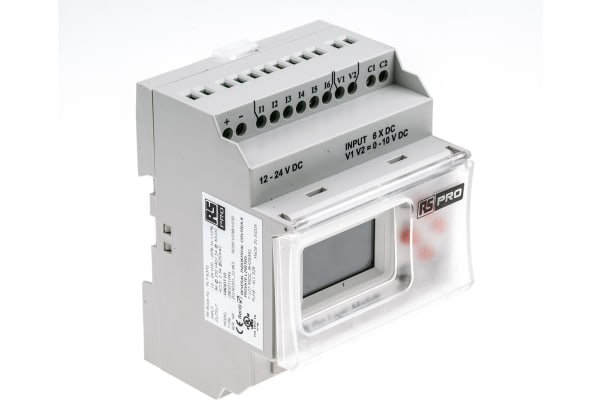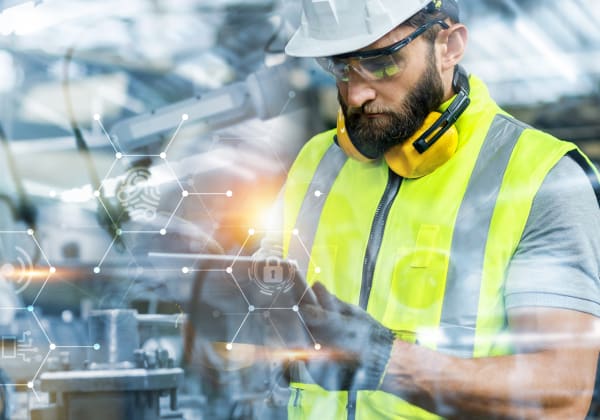- Published 23 Aug 2024
- Last Modified 23 Aug 2024
- 5 min
Guide to Industrial Displays and Monitors
Industrial displays and monitors include ruggedised designs and human-machine interface types with touch screens. This guide explores the types of ruggedised industrial displays and monitors on the market.
Reviewed by Peter Kendall, Technical Interaction Engineer (June 2024)
There are all sorts of types of industrial monitors and types of industrial displays available. These hardy screens differ from standard computer displays because they are specifically designed to withstand the rigours of manufacturing. For example, the screen may be designed to function in extreme temperatures or vibrations, or exposure to dust or moisture. This guide looks at the characteristics of industrial monitors and the applications they are used for. If you’ve ever wondered what is the purpose of a monitor for industry, read on to find out more.
Industrial Monitors
The standard computer monitor for the home or the office won’t necessarily cut the mustard when it comes to manufacturing. Enter the industrial monitor. Displays for industry are expected to work 24-7, withstand extreme vibrations, cope with fluctuations in temperature or exposure to hazardous materials, have a long design life, and function without interruption.
Types of Industrial Monitor
There’s a wide range of industrial monitors on the market. They come in a range of shapes and sizes and with different display technologies, including liquid crystal displays (LCDs) and newer LED and OLED screens. Some monitors feature touch screens or may be mounted on panels or racks. Let’s look at some of the common types of monitors.
HMIs
One of the very widely used types of industrial monitor is the HMI display. What does HMI stand for? It means human-machine interface. These systems are essential parts of factory automation.
What is an HMI?
So, what is HMI display? Simply put, the HMI enables the user to engage with and control a machine. A mouse or keyboard is an example of an HMI we’re all familiar with. What is a HMI screen? Industrial HMI monitors are used in manufacturing, oil and gas production, utilities, and building and infrastructure operations to control processes.
How does a human machine interface work? Key capabilities of HMIs include:
- Monitoring processes. Operators can manage a process by monitoring it in real time. The HMI shows data such as information from sensors and production metrics
- Controlling machines. HMI displays allow the engineer or technician to input commands. A typical example might be starting and stopping a production cycle
- Visualising production. The HMI may display graphics, diagrams, or charts. This enables the operator to have insight into the status of the production operation
- Alarm management. The HMI may visually or audibly alert the operator if something is going wrong. This can enable the technician to intervene to prevent damage to machinery or lost production
- Remote access. The HMI may be situated remotely to allow the operator to control the machine on the shopfloor as if they were on site
Touch Screen Monitor
What is a touch screen and what is a touch screen used for? A touch screen can be operated just by pressing the screen and is a common type of HMI In industrial settings. That’s because, just as consumer PCs and mobile devices sometimes employ touch screens, they are quick and easy to operate in the manufacturing environment.
Unlike the touch screen on a laptop, however, industrial touch screens are standalone equipment that can be connected to a piece of machinery or a computer and have been ruggedised for production environments. Some touch screens have thick or hardened glass. They may also have an ingress protection rating (IP rating) that shows the design is effective in preventing ingress by dust, dirt, or water.
Ruggedised Displays
What is a ruggedised display? It’s a monitor that has been specifically designed to operate in a tough environment. Ruggedised displays are used in military and marine applications but also in factories. These types of monitors are designed to operate around the clock and are tested to cope with long production cycles. They may feature scratch-resistant surfaces or thick glass for protection, and they will have a strong IP rating. They may also be designed to cope with extreme temperatures, vibrations, or shocks.
Industrial Display Cabinets
Industrial screens and displays may be housed in cabinets and enclosures designed for the purpose. Computer cabinets may be made from steel or stainless steel, IP-rated to protect against dust and water, or ruggedised to protect the display in a hazardous or otherwise hostile environment.
Panel-Mount Industrial Monitors
Some types of industrial monitors come in panel format for ease of mounting. Panel-mount monitors are compact and can easily be ruggedised for industrial use. A range of types and sizes of panel-mount industrial monitors is available.
Industrial Open Frame Monitors
Open frame monitors can be designed for industrial use, as well as their common applications in point of sale and medical. Open frame monitors include an enclosure covering the rear of the monitor, but the front of the display is unprotected and has mounting brackets attached to the side. Open frame monitors have the advantage of being easy to clean and are a good way of conveying information quickly, while providing simple touch screen technology, too.
The Future of Displays for Industry
The growing need to analyse and visualise reams of production data means industrial displays and monitors are in demand. In factory settings where there is already a lot of automation, they provide a crucial means of controlling and understanding complex production processes. As more automation is used in smart factories, displays will play an important role in enabling engineers to understand what is going on in the production environment and to intervene if there are problems.
Then there’s the issue of energy consumption. As manufacturing becomes more sustainable, developers of industrial screens are making their designs more energy efficient to help manufacturers cut their carbon footprint. The customisation of industrial display systems for bespoke applications is a growing trend, too. Human-machine interfaces are also becoming more personalised and sophisticated (by adopting voice command technology and recognition of gestures, for example), while the quality of industrial screens continues to improve (much in line with improvements in consumer display technology).
Finally, the integration of augmented reality and virtual reality technologies into industrial displays promises to enhance the capabilities of these rugged monitoring systems even further in the future.
To explore our range of PLCs, HMIs, and industrial computing equipment, look here.



